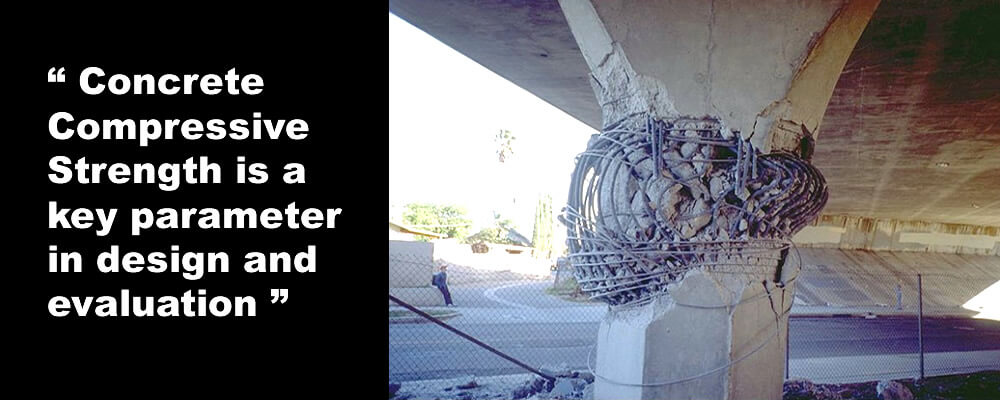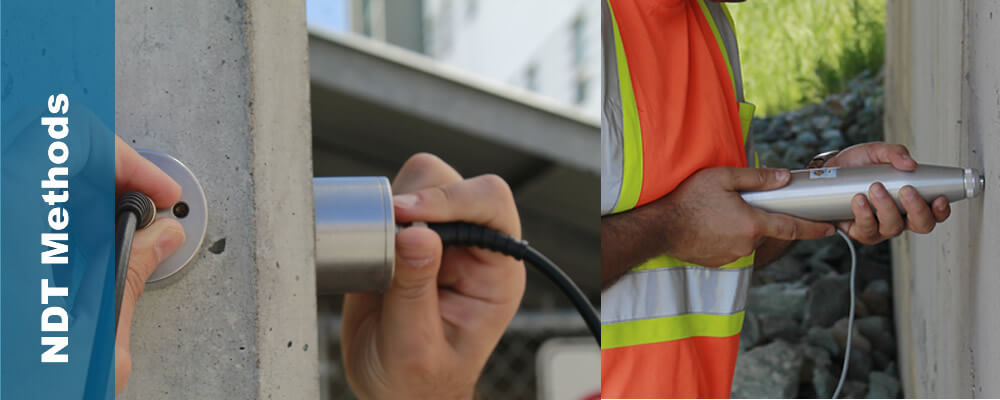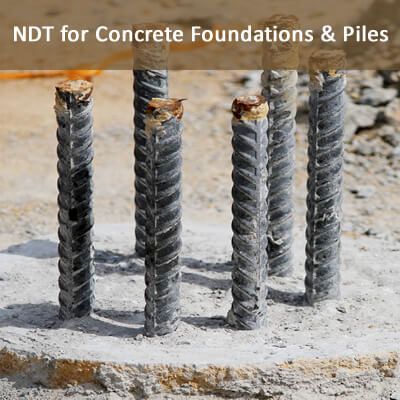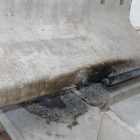What is the best method for the measurement of compressive strength of concrete? Testing cylinders and cubes in compression is the most convenient and well-known method for measuring the strength. The main question is if one can design and develop a method that can measure the strength faster, easier, and more accurate? Can all the advancements in sensor technology and better understanding of the development of concrete microstructure can help us in the measurement of compressive strength of concrete. The answer is a big YES; however, it comes with different challenges.

Compressive Strength of Concrete
It is safe to say that the compressive strength of concrete is the most important parameter used in the design of concrete structures; however, concrete does not provide significant tensile strength. Perhaps, this is the very fundamental idea of building reinforced concrete, where steel reinforcement provide the much needed tensile strength of the section.
Compressive strength has the same degree of importance when it comes to the evaluation of existing structures. Structural engineers used it for modeling different structural properties, such as tensile strength, and to predict the flexural and shear capacity of the elements. Other structural characteristics such as ductility and stiffness can be also defined as a function of compressive strength.
It is one single piece of information everyone wants to know before going deep into analysis and design as well as structural evaluation. It is also important to know that the measurement of compressive strength is widely accepted as the best test for the quality control of fresh concrete.
How to Measure Compressive Strength of Concrete
Testing concrete cylinders and cubes is the most widely used test for measuring the compressive strength. For example, ASTM C 39 provides a standard procedure for testing concrete cylinders and reporting the test results. The most accepted test result is the strength of cylinders at the age of 28 days. For concrete with supplementary cementitious materials, longer time (56 days) is specified. The 28 and 56 days are relatively long considering the construction speed.
For existing structures, compression test is done on drilled cores to evaluate the compressive strength of concrete. A larger number of core samples should be drilled within concrete in different positions in order to evaluate the compressive strength with good precision. This makes the effectiveness of test results subjective, and the results are somewhat localized. The nature of compressive strength test is intrusive to structure; damage to concrete; there is also the risk of damaging rebar or prestressing tendons.
Fast-Tracking the Compression Test?
As mentioned earlier, the standard method requires 28 days results as minimum compressive strength of structural concrete. There is a lot of interest from engineers and project managers for alternative test plans to measure the compressive strength with the same level of accuracy, but faster and easier.
Maturity method has been developed and used to predict the early age compressive strength of concrete. The test used curing temperature variation of in-situ concrete samples to predict the strength. To do so, a strength-maturity relationship should be established for the concrete mix in the first place.
Existing Structures
NDT methods can be helpful to map compressive strength variations in a concrete structure. To do so, a combination of Ultrasonic Pulse Velocity (UPV) and Rebound (Schmidt) Hammer can be used to evaluate the in-situ compressive strength of concrete. A minimal number of concrete cores should be drilled within the concrete in order to calibrate the employed NDT methods. The compressive strength map would be generated using the employed NDT methods based on the former calibration. Breysse (2012) presents a comprehensive literature review about non-destructive evaluation of concrete strength.
Reference
ASTM C 39 (2104) “Compressive Strength of Cylindrical Concrete Specimens”, ASTM International







Ujwal Dhakal
In-situ concrete structure will also be tested imposing design load over slab/beam.
SRINIVASAN
QUIET A INFORMATIVE ARTICLE THROUGH WHICH I LEARNED A LOT
SOVAN SARKAR
I am having more than 20 years experience in the field of QA/QC in civil engineering construction technology. From my experience in various R &D and experiment for hardened concrete latest technology which i strongly recommended for compressive strength in structure CUT & PULL OUT TEST, ASTM C900. This test involves pulling a post installed insert(expanded ring) from concrete against a counter pressure by hydraulic pull machine. The ultimate pull out F is related directly to compressive strength .
NOTE- No effect or damages in structure in quality point of view.
MP
Maturity monitoring is the best way to accurately track in-place concrete strength at early ages and allows you to accelerate projects, saving time and money. There is some great educational material on the maturity method here:
http://www.maturitycentral.com/education/
Abdullah Ali Abbasi
Is it possible to measure the strength of concrete when we are about to pour it?
Is there anyway, that we can ensure the strength before the casting by checking the constituents or ingredients of the concrete?
PCTE
The article is informative about how to estimate the compressive strength of concrete.